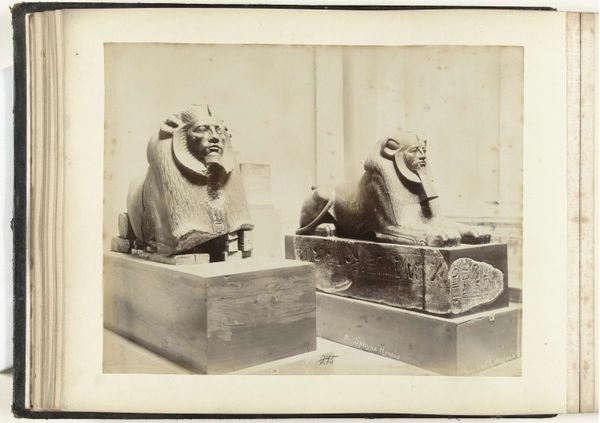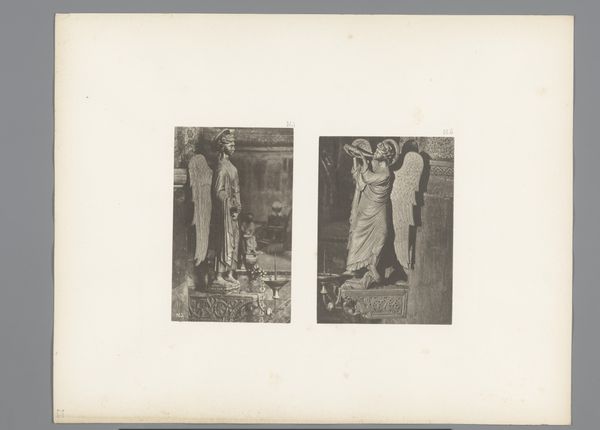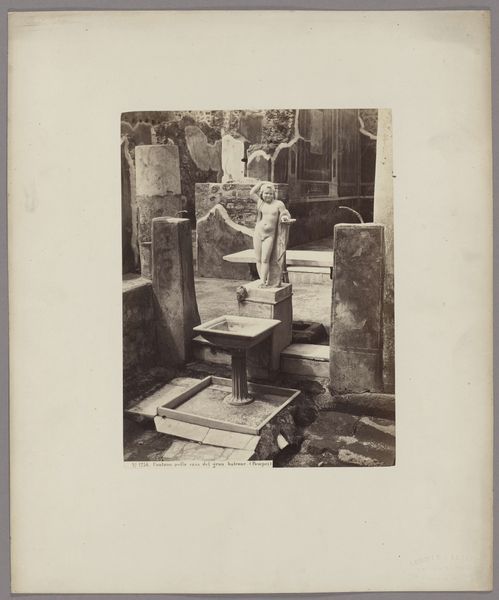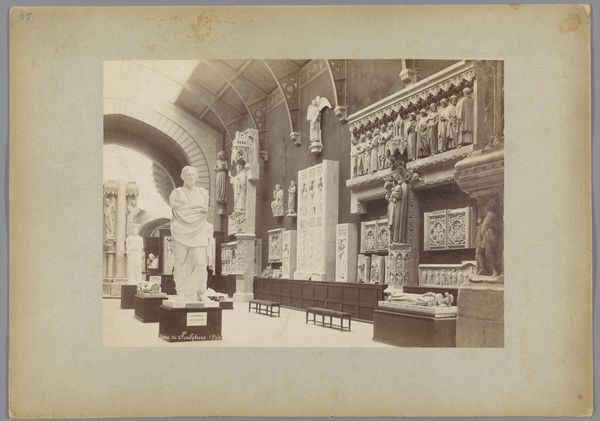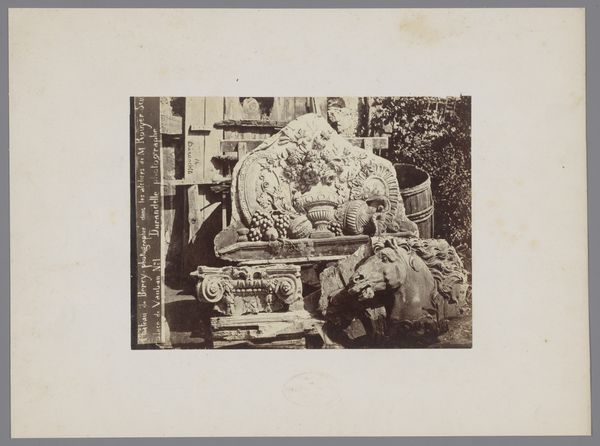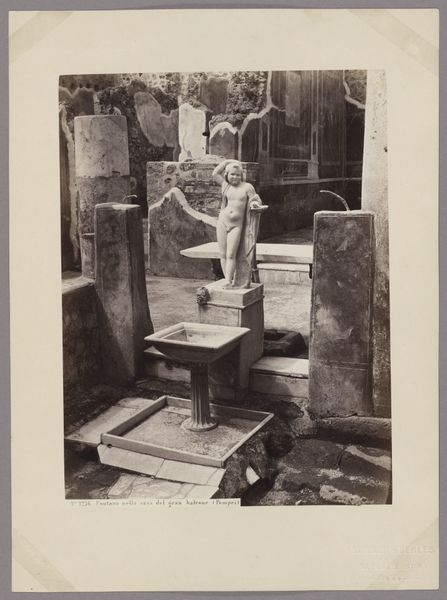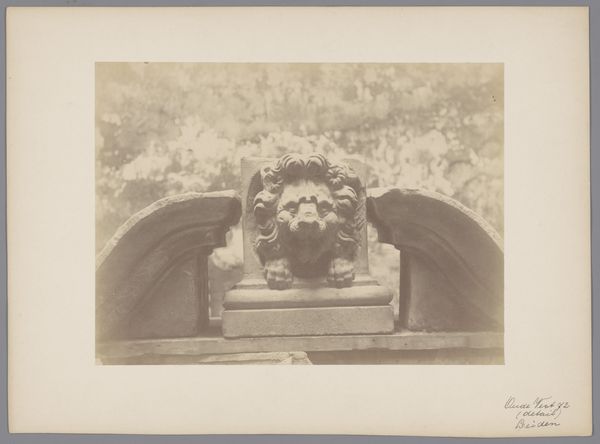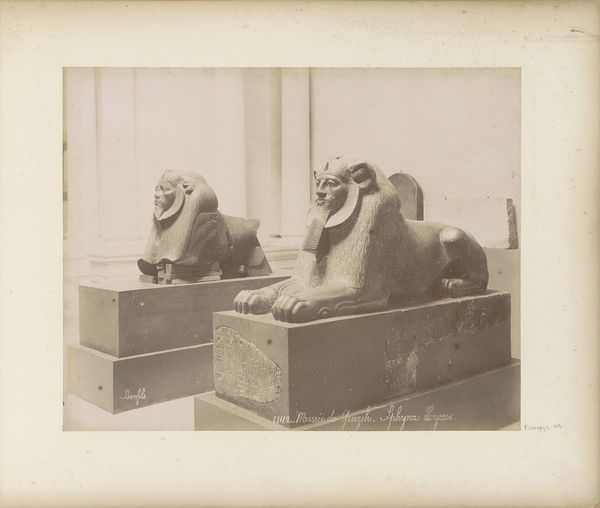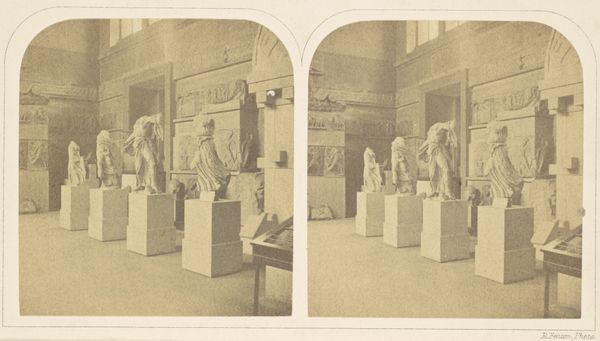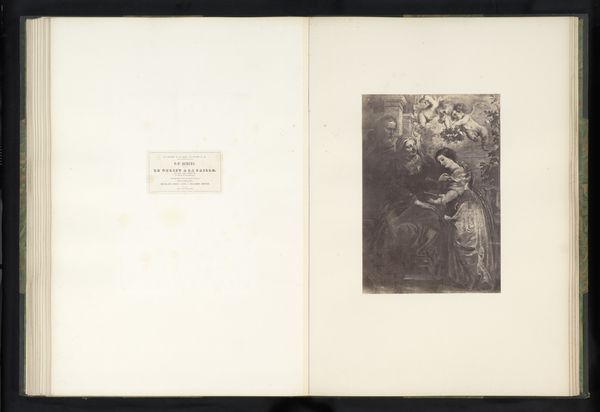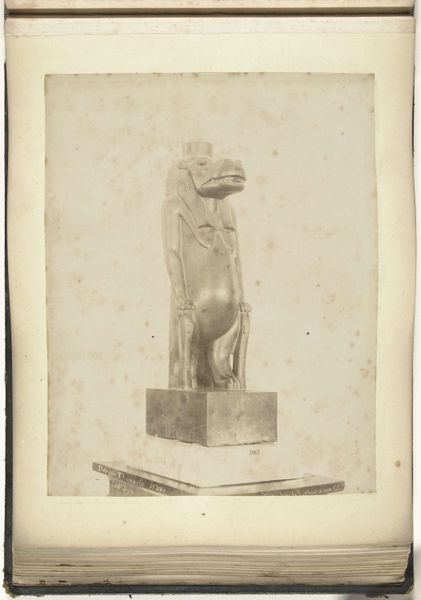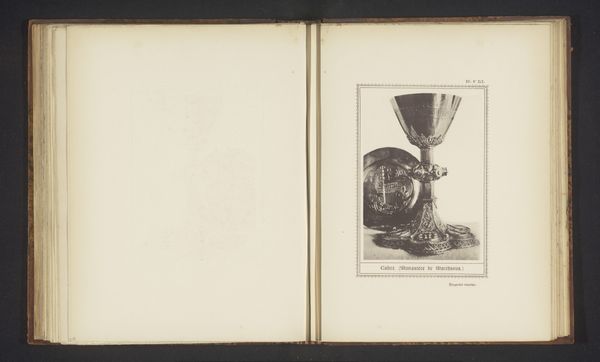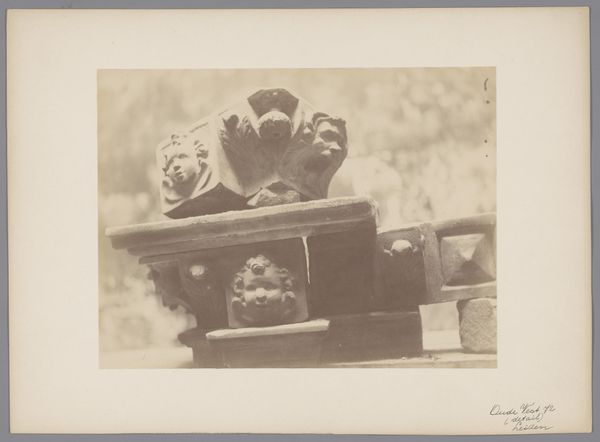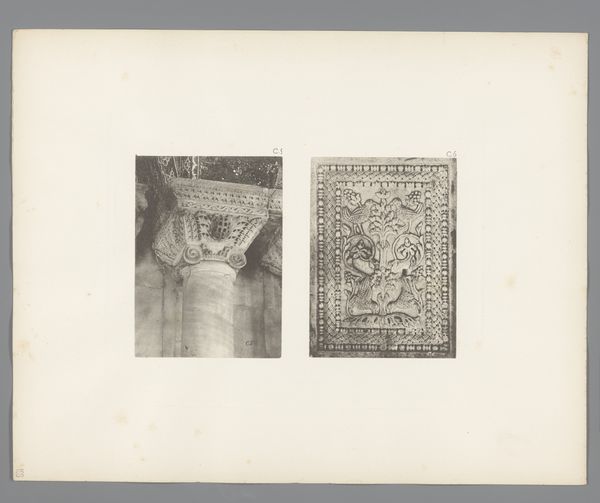
Opstelling van twee sfinxen in het Museum der Egyptische oudheden te Caïro c. 1875 - 1900
0:00
0:00
photography, gelatin-silver-print
#
portrait
#
still-life-photography
#
ancient-egyptian-art
#
photography
#
ancient-mediterranean
#
gelatin-silver-print
#
history-painting
Dimensions: height 209 mm, width 273 mm
Copyright: Rijks Museum: Open Domain
Curator: Let’s examine this photograph titled “Opstelling van twee sfinxen in het Museum der Egyptische oudheden te Caïro,” which translates to “Arrangement of two sphinxes in the Museum of Egyptian Antiquities in Cairo,” created sometime between 1875 and 1900. The image comes to us anonymously. What are your first thoughts? Editor: It’s…stark. The tonal range in this gelatin-silver print is limited, flattening the forms and giving it an almost ghostly presence. It definitely evokes a sense of being in a museum, capturing objects far removed from their original context. Curator: Indeed. What do you see in these sphinxes themselves? These composite creatures, lion’s bodies and human heads…their symbolism is so rich and complex. We see this motif repeated across millennia and cultures. Editor: And each crafted, no doubt, by different hands. Look at the chisel marks visible in the photograph – the rough texture contrasts with the idealized forms they were striving for. I wonder about the labor involved in quarrying and shaping the stone, the sheer physicality of it. And then, the photograph itself, capturing a moment of their display, a second life. Curator: The act of photographing, then, adds another layer of meaning. These sphinxes, icons of power and wisdom, are transformed into artifacts, subjects for study and contemplation. I imagine viewers at the time saw this as a window into the ancient world, a way to connect with a civilization steeped in mystery. Editor: It also strikes me how these monuments, originally embedded in a landscape and deeply tied to ritual practice, are now aesthetic objects in a climate-controlled room. How does this dislocation change how we perceive power when its foundations are uprooted from society and nature? Curator: A poignant observation. This photograph acts as a filter, prompting us to consider not only the artistry and symbolic significance of these sphinxes but also their journey through time and their current state of preservation, and of course, representation. Editor: It truly does. Thinking about materiality and method in relationship to social setting makes me more attuned to our responsibility in preserving cultural memories while remaining open to critique.
Comments
No comments
Be the first to comment and join the conversation on the ultimate creative platform.
